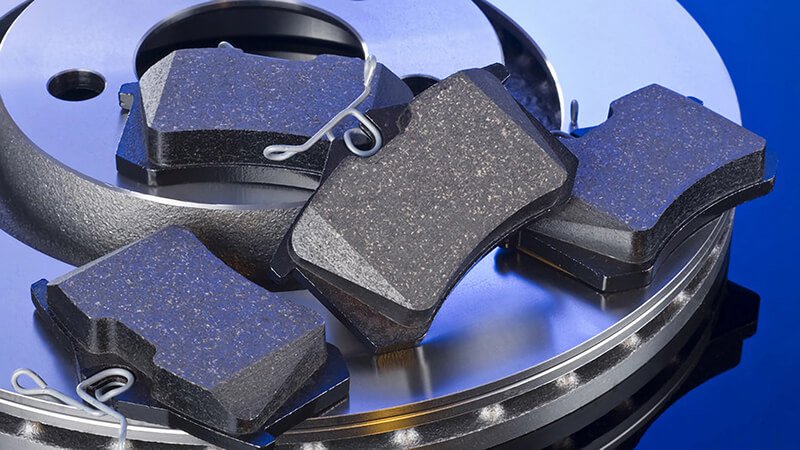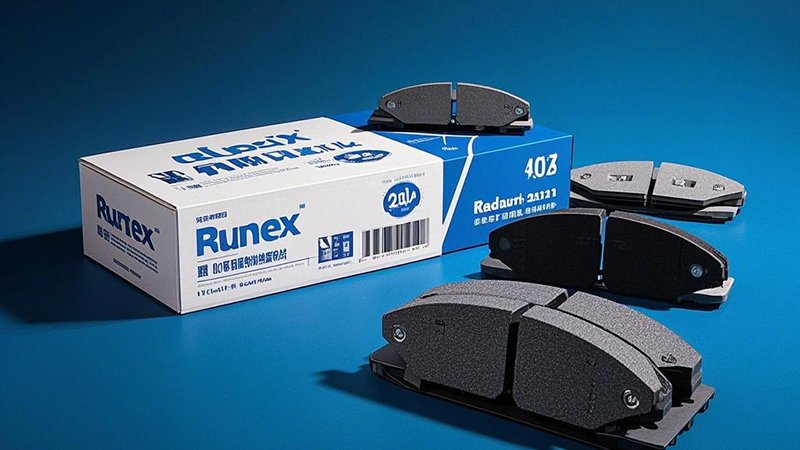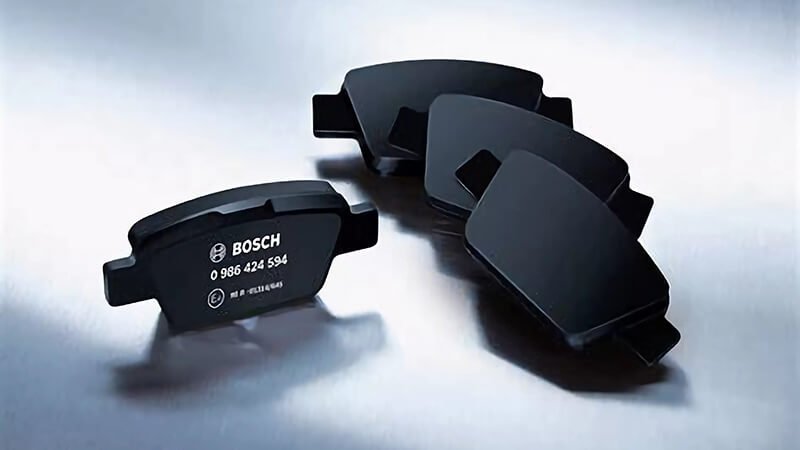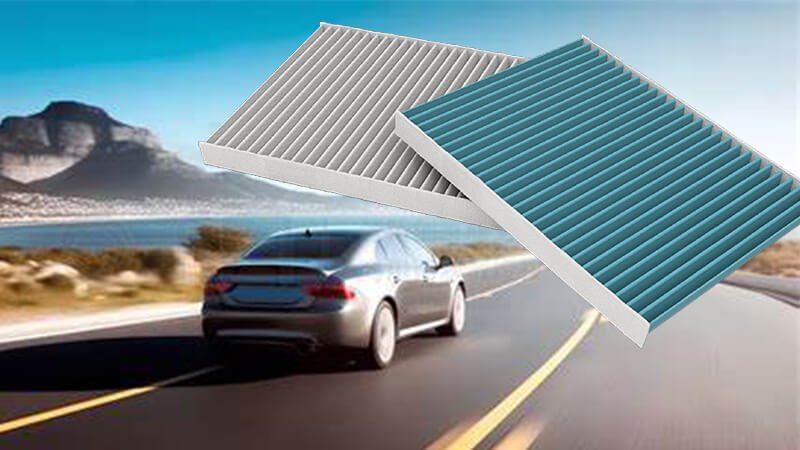When you're thinking about brake parts for your vehicle, it’s crucial to understand which components matter the most. There’s no room for compromise when it comes to vehicle safety, and the right parts can make a significant difference.
Choosing the right brake components requires careful consideration of your vehicle's needs and your driving habits. Knowing the essential brake parts and how to pick them is key to maintaining safety and performance.
The braking system plays a pivotal role in vehicle performance and safety. To ensure you’re making informed decisions, let's explore the most important factors that affect your brake parts selection.

How do I know what brakes to buy?
With so many options available, choosing the right brakes for your vehicle can be overwhelming. Do you go for standard, performance, or heavy-duty brake parts1? Let’s break down the process and help you make the right choice for your car.
When deciding on brake parts, factors like vehicle type2, driving conditions3, and personal preferences should guide your purchase. Whether it’s brake pads, rotors, or calipers4, make sure they match your needs.
Selecting the right brake parts requires a strategic approach. Here’s how you can decide:
Vehicle Type and Usage
The first factor to consider is your vehicle’s type5 and how you use it. For instance, if you have a family sedan, you won’t need the same brake parts as someone with a high-performance sports car or a heavy-duty truck.
| Vehicle Type | Ideal Brake Pads | Ideal Brake Rotors | Notes |
|---|---|---|---|
| Passenger Vehicles | Ceramic or Organic Pads | Standard Rotors | Quiet, cost-effective, and comfortable for everyday driving. |
| Sports Cars | Metallic or Semi-Metallic | Performance Rotors | Higher durability and heat dissipation for high-speed driving. |
| Trucks/Heavy Duty | Heavy-Duty Metallic Pads | Slotted or Vented Rotors | Built to handle heavy loads and frequent braking. |
Driving Conditions
Understanding the conditions under which you drive can significantly influence your choice. For instance, city driving with frequent stop-and-go situations requires brake pads that wear evenly and quietly. On the other hand, off-road or mountain driving demands pads and rotors that can withstand higher temperatures and stress.
| Driving Conditions | Recommended Brake Pads | Recommended Brake Rotors | Additional Considerations |
|---|---|---|---|
| City Driving | Ceramic or Organic Pads | Standard or Vented Rotors | Best for daily driving with low noise and dust. |
| Highway Driving | Metallic Pads | Slotted Rotors | Handles higher speeds and heat better. |
| Off-Road Driving | Semi-Metallic Pads | Slotted or Drilled Rotors | Withstands dirt, mud, and extreme wear conditions. |
Budget
Your budget is another important factor. If you’re looking for affordable solutions, organic pads and standard rotors will typically cost less. But remember, spending a little more on high-quality parts can save you money in the long run by reducing maintenance and increasing the longevity of your braking system.

What is the most important part of the brakes?
When you think of a braking system, several components come to mind. But which one is truly the most important for safe and efficient braking? Let's explore why brake pads6 take center stage in your vehicle's braking system.
The brake pads7 are the most critical part of your braking system. They create the friction necessary to stop your vehicle and directly impact performance and safety.
The brake pads8 are a central part of your braking system, and here’s why they’re essential:
Function of Brake Pads
Brake pads9 are designed to generate friction against the brake rotors10. This friction is what slows down or stops your vehicle. Without brake pads, the vehicle would not be able to reduce speed effectively. The material of the brake pad is crucial because it directly affects performance, noise, dust production, and how well the brakes work under various conditions.
| Brake Pad Material | Pros | Cons |
|---|---|---|
| Ceramic | Quiet, long lifespan, low dust | More expensive, less effective under extreme conditions |
| Metallic | Durable, handles high heat | Noisy, more dust, harsher on rotors |
| Organic | Cost-effective, quiet | Wears out faster, not suitable for high performance vehicles |
| Semi-Metallic | Good heat dissipation, durable | Noisier, more rotor wear |
Brake Pads and Safety
Worn-out brake pads are a serious safety hazard. When brake pads wear down too much, the metal of the calipers can come into contact with the rotors, causing significant damage and reducing your ability to stop. This can increase the stopping distance and compromise your safety on the road.
Maintenance and Lifespan
Regularly inspecting brake pads and replacing them before they get too thin can prevent costly repairs and maintain the safety of your vehicle. Brake pads typically need to be replaced every 25,000 to 70,000 miles, depending on your driving conditions.

What are the basic requirements of a braking system?
A braking system isn’t just about brake pads11. It involves several interrelated parts working together to ensure safe vehicle operation. What are the basic components that make up a full braking system?
A typical braking system includes components like the brake pads12, rotors, and the hydraulic system. Each part plays a specific role in ensuring efficient braking performance.
A braking system consists of multiple key components, and each one is crucial for stopping your vehicle efficiently. Here’s a breakdown of the essential parts:
Brake Pads
As mentioned earlier, brake pads are responsible for creating the friction needed to slow or stop the vehicle. The material of the brake pad affects its durability and performance. Regularly replacing them ensures that the braking system remains effective.
Brake Rotors
Brake rotors13 work in tandem with the brake pads. They are discs that rotate with the wheel, and when the brake pads apply pressure to them, the vehicle slows down. There are different types of rotors, including solid, vented, and slotted, each designed for different driving conditions.
| Rotor Type | Advantages | Disadvantages |
|---|---|---|
| Solid Rotors | Affordable, simple design | Less heat dissipation |
| Vented Rotors | Better cooling, lightweight | Can be more expensive |
| Slotted Rotors | Better heat management | Can be noisy, more wear on pads |
Brake Calipers
Calipers are responsible for squeezing the brake pads against the rotors. They are part of the hydraulic system and apply the force needed to generate friction. There are two types of calipers: floating and fixed. Floating calipers are more common and cost-effective, while fixed calipers offer more precise braking performance.
Brake Fluid
Brake fluid is crucial for the hydraulic system. It carries force from the brake pedal to the brake pads, making it possible to stop the vehicle. Over time, brake fluid can degrade or absorb moisture, which reduces its effectiveness. It's important to check and replace the brake fluid regularly to maintain optimal braking performance.
Brake Lines
The brake lines are responsible for carrying brake fluid from the master cylinder to the calipers. They need to be inspected regularly for wear and tear. Leaks in the brake lines can lead to brake failure, which can be catastrophic.

What is needed for a full brake job?
A full brake job involves more than just replacing brake pads14. It requires a thorough inspection and possibly the replacement of other parts to ensure your vehicle’s braking system is in top condition.
A complete brake job may include replacing brake pads, rotors15, calipers16, brake fluid, and possibly other components like the master cylinder. The goal is to restore the braking system’s full performance and safety.
A full brake job goes beyond just swapping out the brake pads. Here’s what’s typically involved:
Brake Pad Replacement
This is the most common part of any brake job. Brake pads wear down over time and need to be replaced regularly to maintain braking performance and safety.
Rotor Resurfacing or Replacement
If the rotors are damaged or warped, they may need to be resurfaced or replaced. Resurfacing removes minor grooves and imperfections, allowing the brake pads to make better contact. If the damage is too severe, new rotors will be required.
| Rotor Condition | Action Needed | Notes |
|---|---|---|
| Minor Grooves | Rotor Resurfacing | If the grooves are shallow enough. |
| Warped or Cracked | Rotor Replacement | Major damage requires new rotors. |
Caliper Inspection
The calipers should also be inspected to ensure they are functioning correctly. If the calipers are sticking or damaged, they may need to be replaced. A malfunctioning caliper can cause uneven braking and reduced performance.
Brake Fluid Replacement
Over time, brake fluid absorbs moisture, which can reduce its effectiveness. Replacing the brake fluid ensures that the hydraulic system functions properly, providing reliable braking.
Master Cylinder and Brake Lines
In some cases, the master cylinder or brake lines may need to be inspected or replaced. The master cylinder generates the hydraulic pressure required to operate the brakes, while the brake lines carry fluid to the calipers.
A full brake job ensures that every part of the braking system is working as it should, restoring your vehicle’s stopping power and overall safety.

Conclusion
Understanding the essential brake parts is crucial for making informed decisions about vehicle maintenance. From brake pads to rotors, each part plays a significant role in ensuring your vehicle’s safety and performance. Regular inspections and timely replacements are necessary to keep the braking system in optimal condition.
-
Learn about the importance of choosing brake parts based on vehicle type to ensure compatibility and safety. ↩
-
Learn how factors like driving conditions affect the decision-making process for brake part selection. ↩
-
Understand the differences between standard, performance, and heavy-duty brake parts to make an informed choice. ↩
-
Get detailed information on different brake components such as pads, rotors, and calipers and their functions. ↩
-
Discover which brake parts are suitable for different vehicle types, from sedans to trucks. ↩
-
Learn about why brake pads are considered the most important component for safe and efficient braking. ↩
-
Understand the significant role of brake pads in vehicle performance and safety. ↩
-
Discover how brake pads function in a braking system and why they are essential for stopping a vehicle. ↩
-
Learn how the friction generated by brake pads and rotors is key to stopping your vehicle. ↩
-
Understand the role of brake rotors and how they work with brake pads to slow down your vehicle. ↩
-
Learn about all the essential components that make up a complete braking system. ↩
-
Understand how brake pads contribute to vehicle safety and braking efficiency. ↩
-
Learn about the important function of brake rotors and their interaction with brake pads. ↩
-
Learn about all the necessary steps involved in a complete brake job for your vehicle. ↩
-
Understand the steps and importance of regularly replacing your brake pads. ↩
-
Discover when and why rotors need to be resurfaced or replaced during a brake job. ↩













